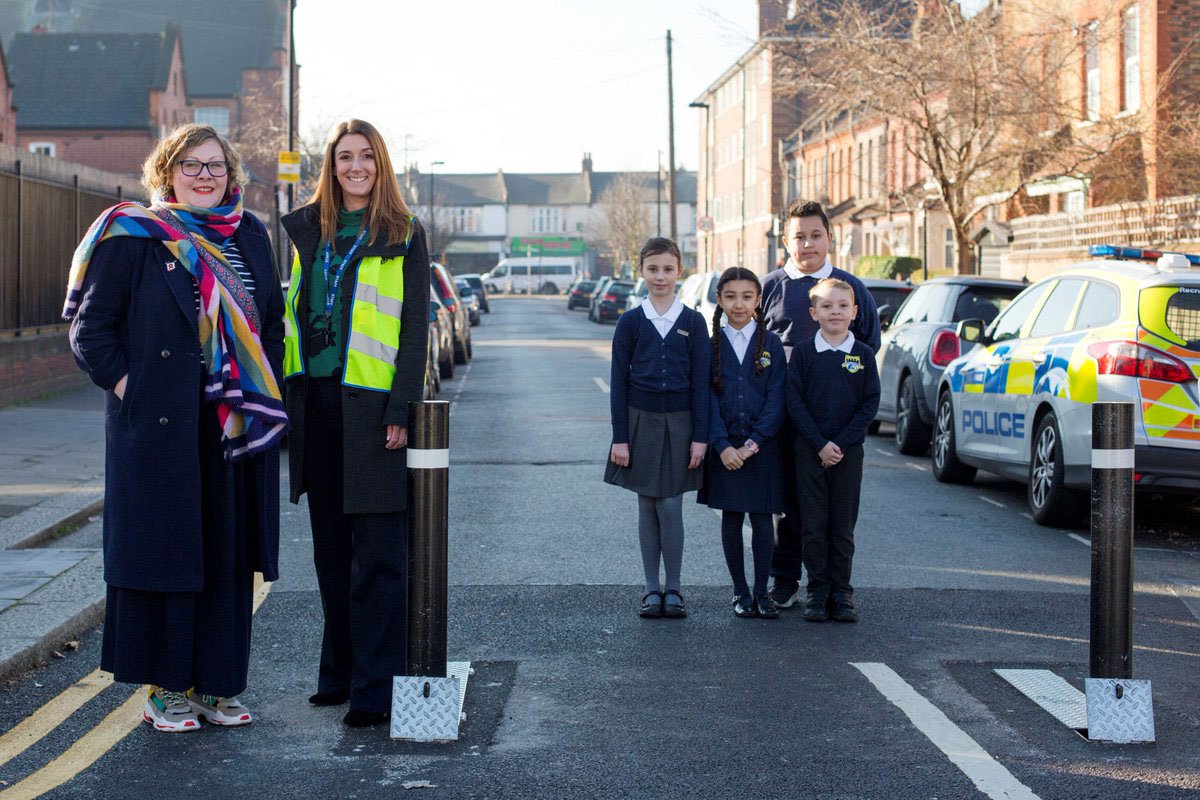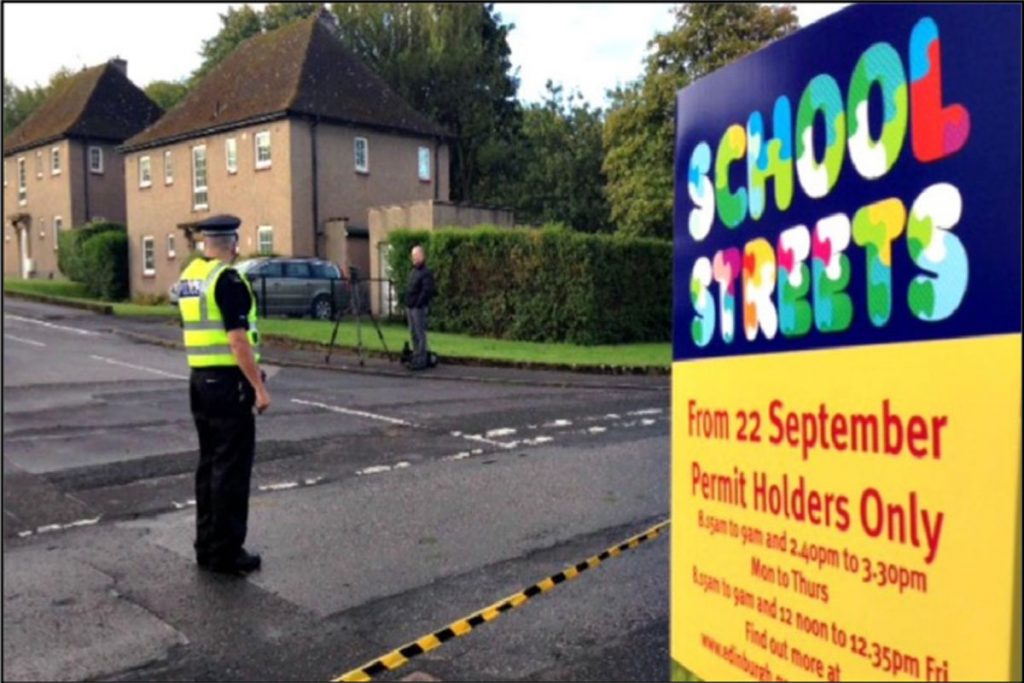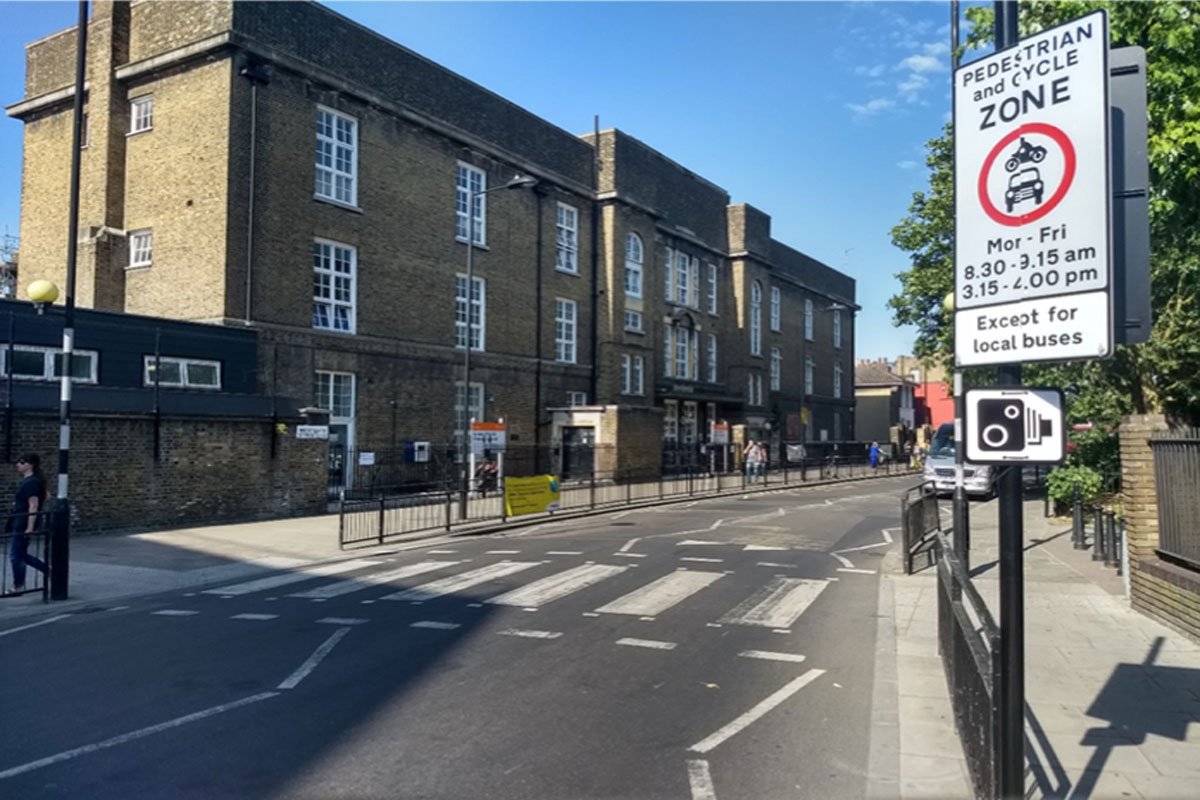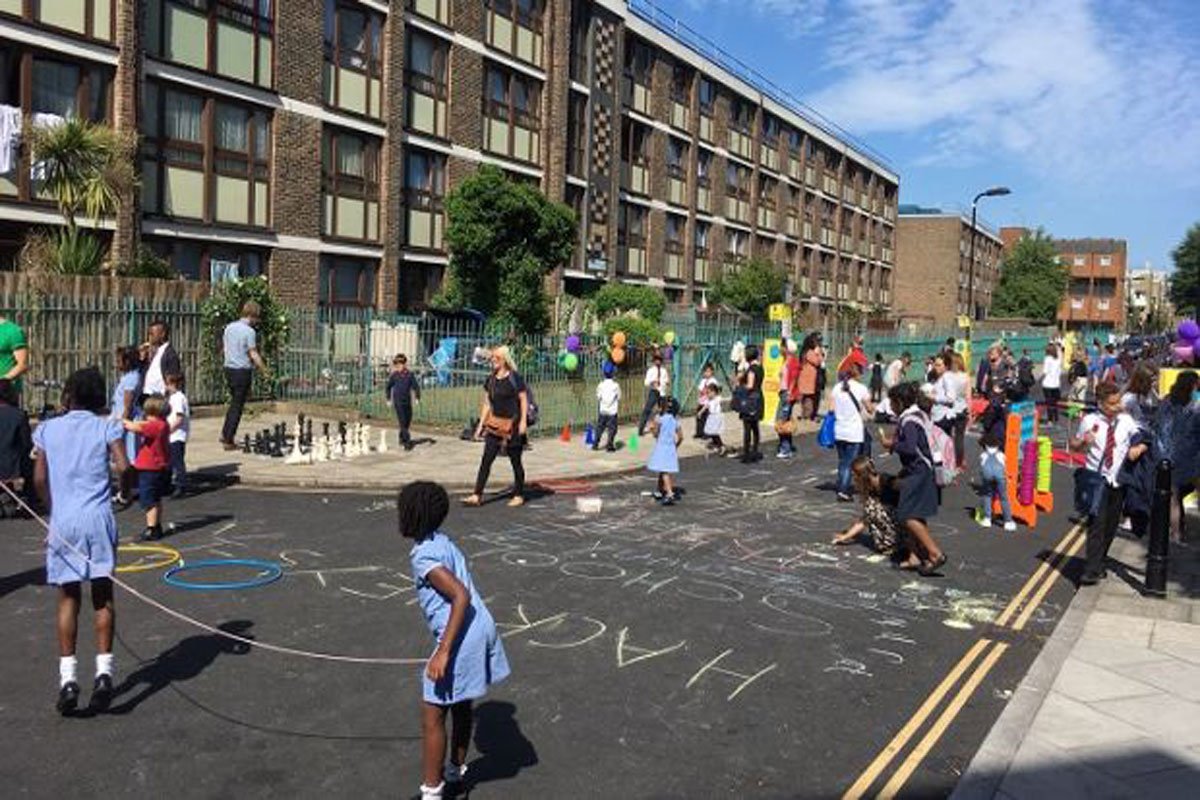
30 May What Are School Streets?
** Cover image: Bollard based school street in Harringey (head teacher and councillors pictured).
By Nick Sanderson
Cities across Europe are banning cars from the streets outside schools during drop-off and pick-up times. It forms part of their strategies to make their cities more liveable for all, particularly families.
The ‘school streets’ approach – that gives streets over to families for a couple of hours a day – is growing.
In Milan, Edinburgh and London, municipalities are making the school run safer. By preventing or limiting cars from accessing the streets outside schools during drop-off and pick-up times.
From 15 minutes to an hour at either end of the school day, the streets outside fill with the sounds of conversation rather than the sounds of engines. And for tens or hundreds of metres of the school journey, families get respite from the traffic that dominates every other street in their cities.
Why have they come about?
School communities wanted to address the congestion, air pollution and road danger outside their gates. A particular danger that comes when tens if not hundreds of children arrive for school every day, on one street.
There’s a long tradition of closing streets for one-off parties, regular Play Streets, annual Open Streets or monthly Ciclovias. Observing how simple it was (compared to major infrastructure changes) a European project brought local authority transport teams together to look at closing streets outside schools. Something that had been happening in Italy since the 1990s.
Following Milan, Edinburgh was the first UK city to introduce ‘school exclusion zones’. The London boroughs of Camden and Hackney followed soon after. Driven by increasing concern about toxic air pollution, the approach is now rolling out across many more parts of the UK and Europe.

Edinburgh
How do school streets work?
The approach varies from place to place. Some streets restrict vehicles entirely. Others allow infrequent buses. Most allow residents to access their properties by car. In almost all instances prohibit through traffic, but allow people cycling. It all depends on local circumstance.
Keeping cars out
The car bans work in many ways. Some, through legal instruments, ticketing (fining) drivers for entering the zone. Either with police making patrols or being on hand at the launch events or through cameras. These automatic number plate recognition (ANPR) cameras automate the process for fining drivers.

Hackney
Where the ban covers all vehicles, bollards or temporary barriers operated by school staff block access. Where necessary, some have made limited parking arrangements a short walk away from the school street. They can also feature general exemptions for drivers that need them.
Fundamentally, however, they all share the principle or restricting cars during the school run to make the streets safer.
Finding the right streets
School Streets aren’t always suitable. Arterial streets might not suit school street style closures, but other temporary trial measures could improve safety. For instance, by introducing traffic calming, slimming lanes, or reducing speed limits. Finding the right locations has been important.
Community-led
What is common across all School Streets is the broad community support in the first place. They’ve so far succeeded through close relationships between authorities and school communities. This also helps spread the word. Before they go live a wealth of promotion happens to help drivers adjust and think about their journeys.
With every successful school street, there’s often demand from neighbouring schools to do the same. Edinburgh now has 11 school streets, Hackney aims to install 17 by 2022.
So, should North American cities start applying this approach?

Sciennes Primary School, Edinburgh
The benefits of school streets safe for kids
The simple fact is we’ve become too reliant on our cars for the school run. In the Greater Toronto and Hamilton Area, for example, the proportion of journeys to school made by car has tripled since the late 1980s, according to Metrolinx data. And while the congestion associated with a car-dependent school run might be frustrating, its other impacts are more alarming. The greatest burdens of which fall on our children.
The school run presents a major opportunity to improve children’s health. Physical inactivity – not moving enough and getting the heart going – is bad for us. It increases the risk of a range of chronic diseases, including obesity, some cancers and type II diabetes, alongside poor mental health. ParticipACTION point out that only a third of Canadian children (35 per cent) are achieving the recommended amount of activity for their age group. A short walk or cycle as part of the school run will contribute valuable minutes towards our daily physical activity count. School streets provide safety for walking and cycling at the destination.

Hackney school streets and play. Photo by Ben Addy
Children are disproportionately affected by air pollution. Toxic exhaust fumes and the dusts that come off brake pads and tyres hamper developing lungs. As the UN Environment explains, “exposure to air pollution at a young age can hinder lung growth, inhibit brain development and increase the risk of conditions such as asthma.” While cars might feel more insulated from the air pollution outside, sitting in a car is actually worse. A car-free school street is one with cleaner air.
Children are also at greater risk from road danger. They are small and vulnerable. And with ever bigger vehicles on the roads, children are the first to suffer. According to TIRF, Children aged 5 to14 years are at greatest risk of pedestrian fatalities and have the highest incidence of pedestrian-related injuries. For child pedestrians under the age of 14, vehicles kill 30 and injure 2,412 every year. A car-free school street is safer for everyone, especially children.
So with children unfairly exposed to inactivity, air pollution and road danger, European cities are pioneering School Streets. Restricting through traffic on streets around schools during drop-off and pick-up times. It’s a smart and inexpensive move. One that Canadian municipalities might want to replicate?
***
Nick Sanderson is an Independent Consultant. He specializes in policy, communications and engagement for the transport and planning sectors. He serves clients in Europe and Canada, following five years developing and promoting active travel policy in London. He recently organized a school streets webinar for 8 80 Cities with leading practitioners from the UK.
Find out more at www.NickSanderson.co.uk



